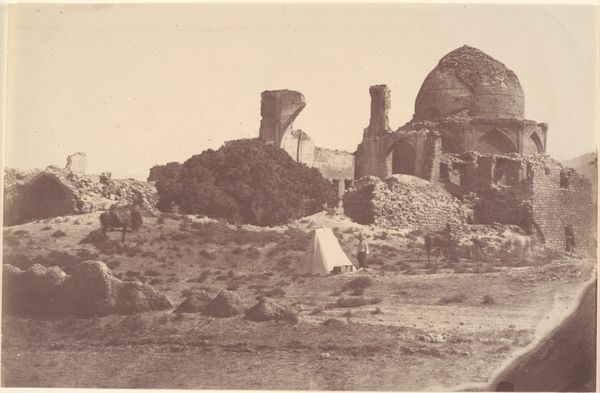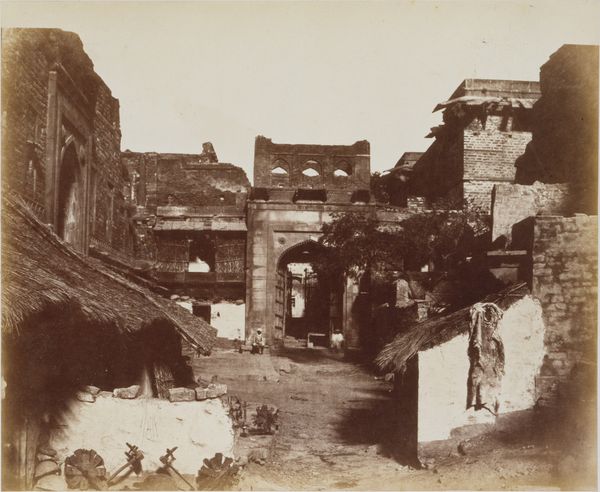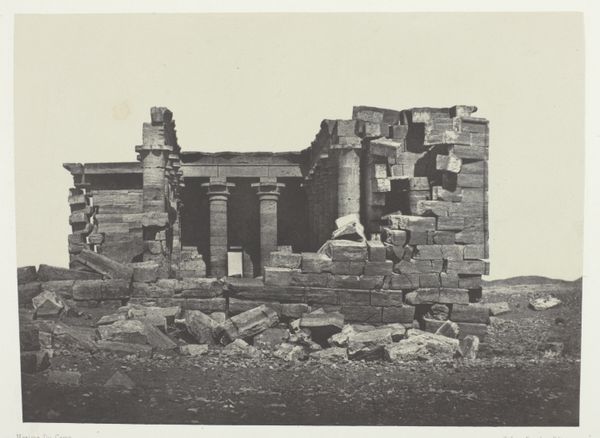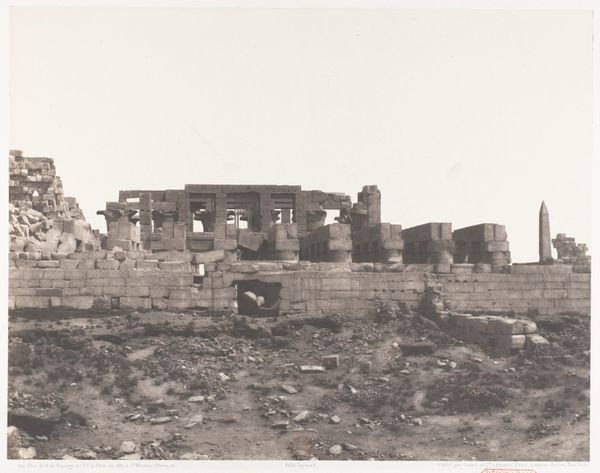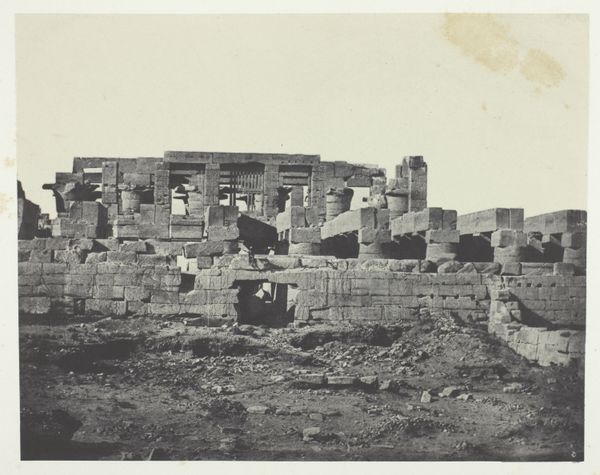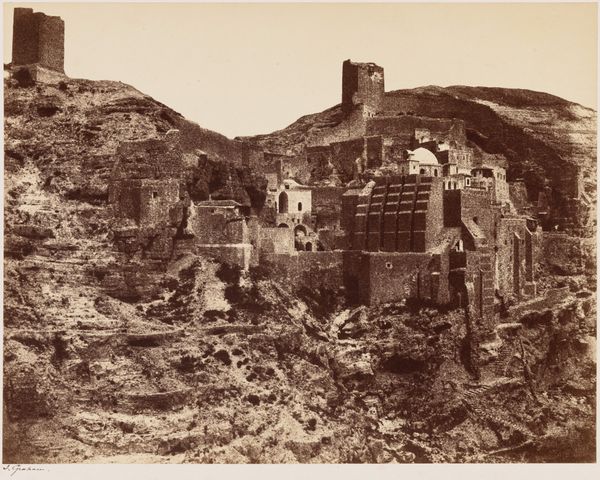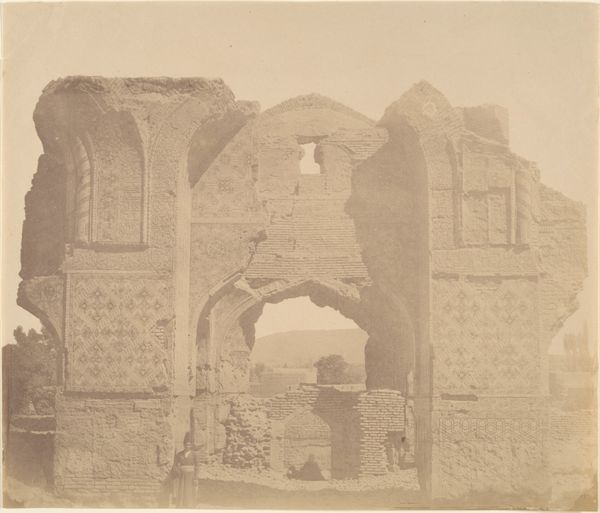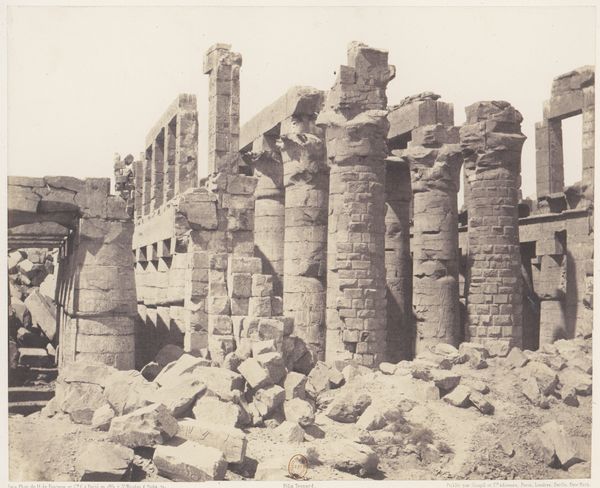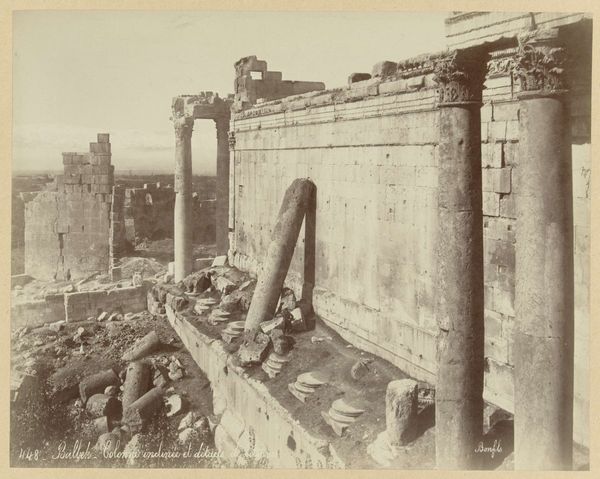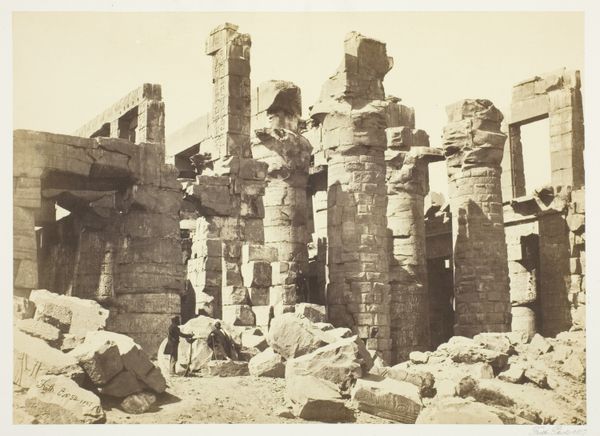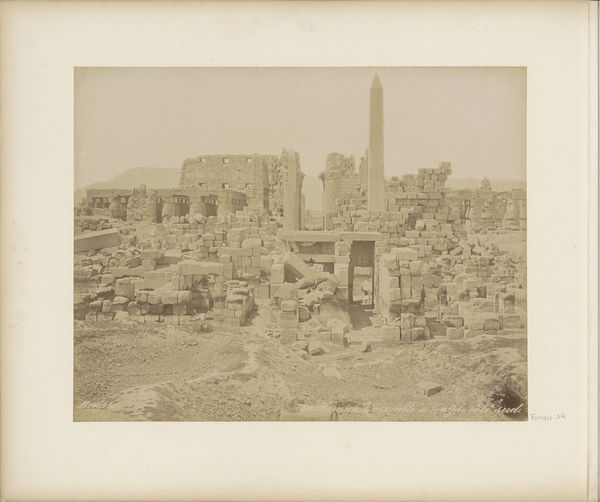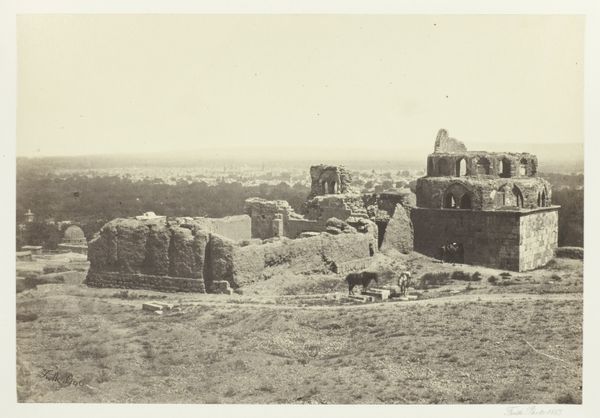
photography, gelatin-silver-print
#
excavation photography
#
landscape
#
photography
#
ancient-mediterranean
#
gelatin-silver-print
#
19th century
#
watercolor
Dimensions: image: 22.8 x 28.4 cm (9 x 11 3/16 in.)
Copyright: National Gallery of Art: CC0 1.0
Curator: Ruins of Martand from Southeast, captured circa 1870 by Samuel Bourne, is a gelatin silver print that evokes a powerful sense of the past. It just looms. Editor: Loom is the word. It hits you, this...almost melancholic stillness. The sepia tones just amplify the feeling. Like witnessing a dream, hazy and distant. Curator: The ruins themselves—they're remnants of the Martand Sun Temple in Kashmir. Built in the 8th century, it stands as a testament to architectural prowess and spiritual devotion but then looted and mostly destroyed in the 15th century. Editor: Right? There's so much unspoken here, isn't there? It's not just stone, it’s like… grief solidified. Like these stones witnessed the rise and fall, and all the tiny lives in between, you know? What sort of rituals happened? Who walked there in sandals whispering secrets? Curator: Exactly. The photograph freezes a specific moment of ruin, of historical entropy. The temple, originally dedicated to the sun god Surya, reflects syncretic influences, blending Kashmiri, Gupta, and Gandharan styles, all through a lens that is as fascinated by the passage of time as it is with spatial form. Editor: So, like, a cultural echo, visually. But that's what grips me – how Bourne captured the vastness, the sheer scale with so much emptiness. Look at the sky. It feels boundless. You feel that… sense of impermanence, that "ashes to ashes" vibe real hard. Curator: Indeed. Bourne’s use of light and shadow emphasizes both the grandeur of the temple's original design and the devastation it suffered. It becomes a potent symbol for vanished civilizations. The structure’s collapse, almost pixelated into granular form, is strangely poetic. Editor: Poetic violence, almost! Because underneath all that academic weight you carry, aren't you moved by that visceral human thing of watching a monument become earth again? Maybe this isn't just "ancient history", but our own destinies mirrored in stone. Curator: Perhaps, but that inevitability holds the seeds of regeneration. We can consider these remnants less as tombstones but sites of cultural persistence. Bourne preserves not merely a relic, but its echoing aura. Editor: Right, the echo! The hush before the stones start singing again, and we start imagining, right here, right now, what those chants must have sounded like, carried on the Kashmiri winds. Okay, I like where we landed with that. Curator: It's the artist who feels things most acutely, don't you think? That ability to see something from a feeling perspective helps contextualize the image far beyond just a single moment.
Comments
No comments
Be the first to comment and join the conversation on the ultimate creative platform.
